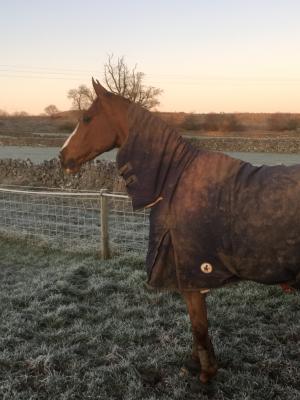
By Vet Charlotte Pennington
Hopefully since March most owners will have been performing worm egg counts to monitor and treat their horses appropriately for worms.
From October onwards worm egg counts tend to become less reliable at detecting worm burdens. This is because small redworm larvae can temporarily stop their lifecycle and encyst within your horse’s gut wall during late winter, when the weather gets significantly cooler. They then reactivate in the following spring when the weather gets warmer again. Hibernating larvae do not produce eggs so therefore cannot be detected in a faecal sample.

When encysted larvae emerge simultaneously in large numbers they can cause severe damage to the horse's gut wall. Affected horses may look bloated or overweight due to the inflammation. In more severe cases there may be signs of diarrhoea and colic and it can be fatal.
The purpose of winter worm treatments is to kill any encysted larvae whilst they hibernate in the horse’s gut in order to prevent a potential mass re-emergence, a bit like a winter clearout! This is one of the few times we recommend a timed treatment without a prior egg count.
Winter wormers are usually given in November/December after the first few hard frosts. It is very important to seek advice when choosing a winter wormer as not all products are effective at killing the encysted larvae. There are only two chemicals (moxidectin and five-day courses of fenbendazole) that are licensed for the treatment. Which option is best depends on the horse, for example does it need a tapeworm treatment? Or is it a young foal, in which case some products are contraindicated.
The main message is to give your horse a winter wormer and please seek advice from your own vet/AMTRA professional about products and timing. Using the wrong product at the wrong time is not only costly but puts your horse at risk of disease.